=========================================================
Updated 16 July 2014: The new 5.1.1b VVX Firmware has been released by Polycom and can be found here
=========================================================
The Polycom VVX Media Phones offer an additional option for Lync Enterprise Voice customers over the traditional consumer choice of ‘Optimized for Lync’ Aries phones running Lync Phone Edition firmware. I recently came back in touch with these devices and this blog post is some of my latest observations.
Microsoft extended support for the Aries phone firmware till 2023 which shows Microsoft’s commitment to traditional telephony devices and to vendors of Lync IP phones continuing sales for some time into the future. The firmware has certainly been refined since its introduction with Lync Server 2010, but the UX has had minimal change or needed any feature enhancement. If you’re looking for an alternative to the Aries phone then Polycom’s VVX Media Phone series is it. The VVX phones have to constantly play catch up to get to firmware feature parity with its purpose built brother. It can offer a different look and feel for customers looking for something closer to an ‘all-in-one’ media phone. Before you go and jump in two feet forward it’s hopefully worth noting a few things from this post.
Basic Functionality
In my view, Polycom have worked tirelessly to release feature updates to these phones on a consistent basis, but we must remember that they had to start from scratch and turn this Polycom SIP generic handset into an operating Lync handset. With the recent releases of Polycom’s UCS 5.0.x versions of firmware they have pushed out some functionality that the phone couldn’t have lived without. Such as –
- Enhanced Presence – 11/04/2014
- BToE (Better Together over Ethernet) – 6/9/2013
- Lync Address Book Web Query – 6/9/2013
- Call Park – 6/9/2013
These all sound like great features but something the Aries phones have had since instalment of Lync Phone Edition in Lync Server 2010.
Environment Readiness
The VVX devices need some changes and updates to get them ready for your Lync infrastructure which are as follows –
- DHCP Scope Updates
- FTP Server Installation
- Firmware Upgrades
- Configuration File Customization
DHCP
The VVX phones look for standard DHCP scope option to find their firmware and configuration settings on each boot. DHCP Scope Option 160 will need to be configured in phone IP ranges:
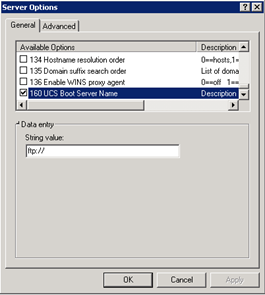
FTP Server
Create a FTP Server accessible from the phone’s IP subnets. Putting it on a Front End server is probably the easiest. This FTP site is used to make available the firmware and configuration that we specified above in DHCP. Configure a FTP User as follows –
Username: PlycmSpIp
Password: PlycmSpIp
Point the home directory of the group to the root directory of your firmware folder.
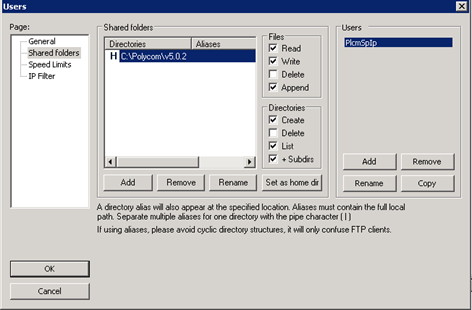
Firmware Updates
Firmware can come in two types –
-
Sip.ld (Older versions are for FTP download installation)
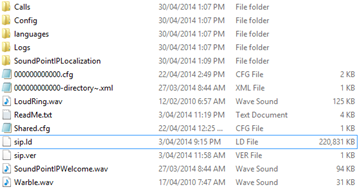
-
Cab files (Lync server device updates)
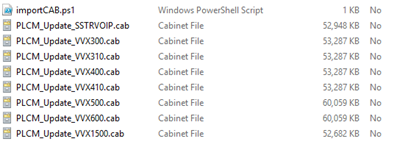
The phones I received came with old 4.x version (sip.ld) of the firmware which will require me to step up to release 5.0.2 (sip.ld) via the FTP server and from this release I could then leverage the included Lync device updates feature on the phone to get to the current ‘N’ release.
Configuration File Customization
As this is a phone that can supports multiple IP-PBX vendors, you will need to pull configuration files down to the phones to make them Lync aware and behave properly with your Lync Infrastructure. The configuration file can be edited via a XML editor and placed on the root directory of the FTP Server ready for phone provisioning. The phones will need to be configured for things like –
- Setting device profile to Lync
- Date and Time zone
- Power saving settings
- BToE enabled/disabled
- Soft key Arrangement
- Tone configuration
- And maybe disabling some things that aren’t ‘Lync’ applicable
The configuration files are –
- 000000000000.cfg (Master configuration file)
- Shared.cfg (Settings file we define)
Find out about configurable line objects to update in the Shared.cfg here from the Polycom UC Administrator’s Guide.
Between the multiple steps to get to current firmware release and the fine-tuning needed of the configuration files, expect a few days to disappear before you’re happy with how these phones operate.
The high level process I performed is below –
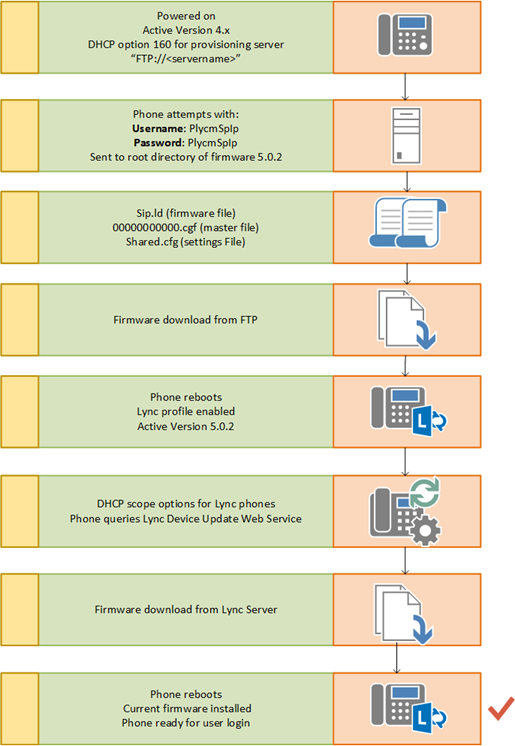
New Features
With the upcoming release of UCS 5.1.x Polycom offer connectivity again with their Colour Expansion Module (previously worked on 4.1.6.4835 only) this offers an additional 84 speed dials/favourites to the Lync interface on the phone. Don’t be fooled, the expansion module isn’t a replacement for the reception style attendant. Lync only needs a single incoming line on the phone and the expansion module won’t display the incoming call queue on the respective line or call park, so it’s more of an extensive list of contacts for calling.
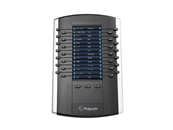
To configure the expansion module to show Lync contacts you must add users to your favourite’s list in the soft client. The phone has 15 (16-1 for line display) grid positions to fill before it will move across to the expansion module. Which means that your favourites list could be getting extensive before one pop’s up on the other side. You may want to move the start of your Lync contacts to be line 17 which isn’t a bad idea if you have any custom branding for your phone background. This can be done like below –
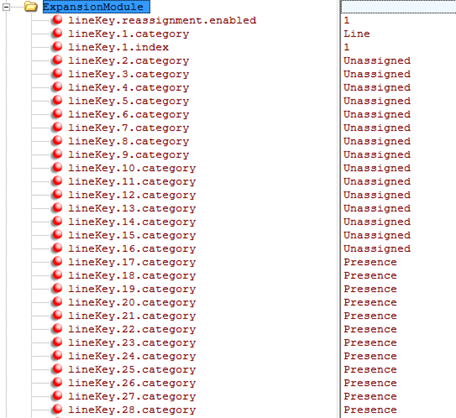
Note that ‘lineKey.reassignment.enabled=1‘ must be set before your custom layout will take effect. Have fun as you copy/paste down to ‘lineKey.100.category‘ to make sure you have categories set to the end of the third page of the expansion module. If you have deployed a mix of VVX phones with and without expansion modules you will have to create custom files for each device that needs it. The VVX phones will look for a master configuration file in the form of their mac address before using the default 000000000000.cfg. Specifying an additional configuration file can mean that the phone gets the ‘shared.cfg‘ with the addition of the expansion module layout like below –
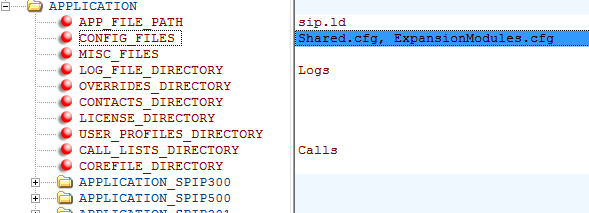
What’s the Value Add for Lync 2013?
The phones premium feature would look to be video calling but currently they don’t share a common codec with Lync 2013. This is still planned for future releases but not for UCS 5.1.0 as far as I know.
Currently attempting a standard SIP call on a VVX600 to another Lync user, the handset will try to negotiate both audio and video media streams which is its default behaviour. The destination recipient will receive a toast pop up for a video call invite like below –

This experience can be confusing to the users as the intended media delivery isn’t achieved. Therefor I disabled video which can only be done via the phones configuration file. Thankfully I guessed right on the line entry –
video.enable=”0″
The result is the incoming SIP INVITE wont attempt to negotiate a video codec anymore and the toast pop up will reflect this as seen below –

I’d like to add while some VVX phones can offer a built-in camera, Aries devices with USB ‘Better Together’ leverage your PC/Laptop webcam for video. So in this situation it’s really a choice between starting/receiving a video call and staring at your IP phone handset for the conversation or looking at your PC. Include some other collaboration features into that conversation like desktop/application sharing and having your eye’s firmly planted on the PC screen for both could be of more benefit. Once Polycom include the VVX 1500 my opinion may change with its large display, the device may be useful for VIP users or small meeting room devices.
Overall
If you believe I’m telling you stay away from the VVX phones, I’m not. Polycom’s commitment to these phones will mean soon they could far excel their Aries brothers. What I am hinting at is plan your deployments carefully. These devices take some configuration and strategic planning before implementation. An Aries phone can almost be unboxed and ‘desk dropped’ the same day. It’s best to keep track of the current firmware release notes that Polycom provide for UCS firmware before purchase to see what features are currently available and what is still in the pipeline. You may find they meet your requirements or if not, keep a closer eye on the support site for the next update. Polycom’s vested interested in Microsoft Lync will mean these handsets will probably offer more than the Aries can deliver in the distant future. Whatever you decide for your handsets, Polycom can easily become the vendor that provides your whole unified communication range with Aries and VVX handsets, conferencing units, telepresence and round table cameras that increase your collaboration experience with Microsoft Lync.

Nice article. Where did you find the ExpansionModules.cfg file? I cannot find it anywhere on the polycom site. Did you create this file manually?
Hi Anthony, from my onenote file of this implementation I have these to forum posts.
http://community.polycom.com/t5/VoIP/VVX-Color-Expansion-Module-VVX-410/td-p/52244
http://community.polycom.com/t5/VoIP/FAQ-Can-I-change-re-assign-the-appearance-of-Line-BLF-Speed-Dial/td-p/8578
Remember that these aren’t BLF but have to be assigned as presence. If you still having problems. I can send through a sample config for VVX600 with Colour Expansion Module.
Great I will take a look at these posts. If you wouldn’t mind sending me an example config for the VVX600 Color Expansion Module that would awesome. Thanks.
Would you please be so kind to send me the ExpansionModules.cfg file as well?
http://1drv.ms/1MhKj1p
Thank you very much.